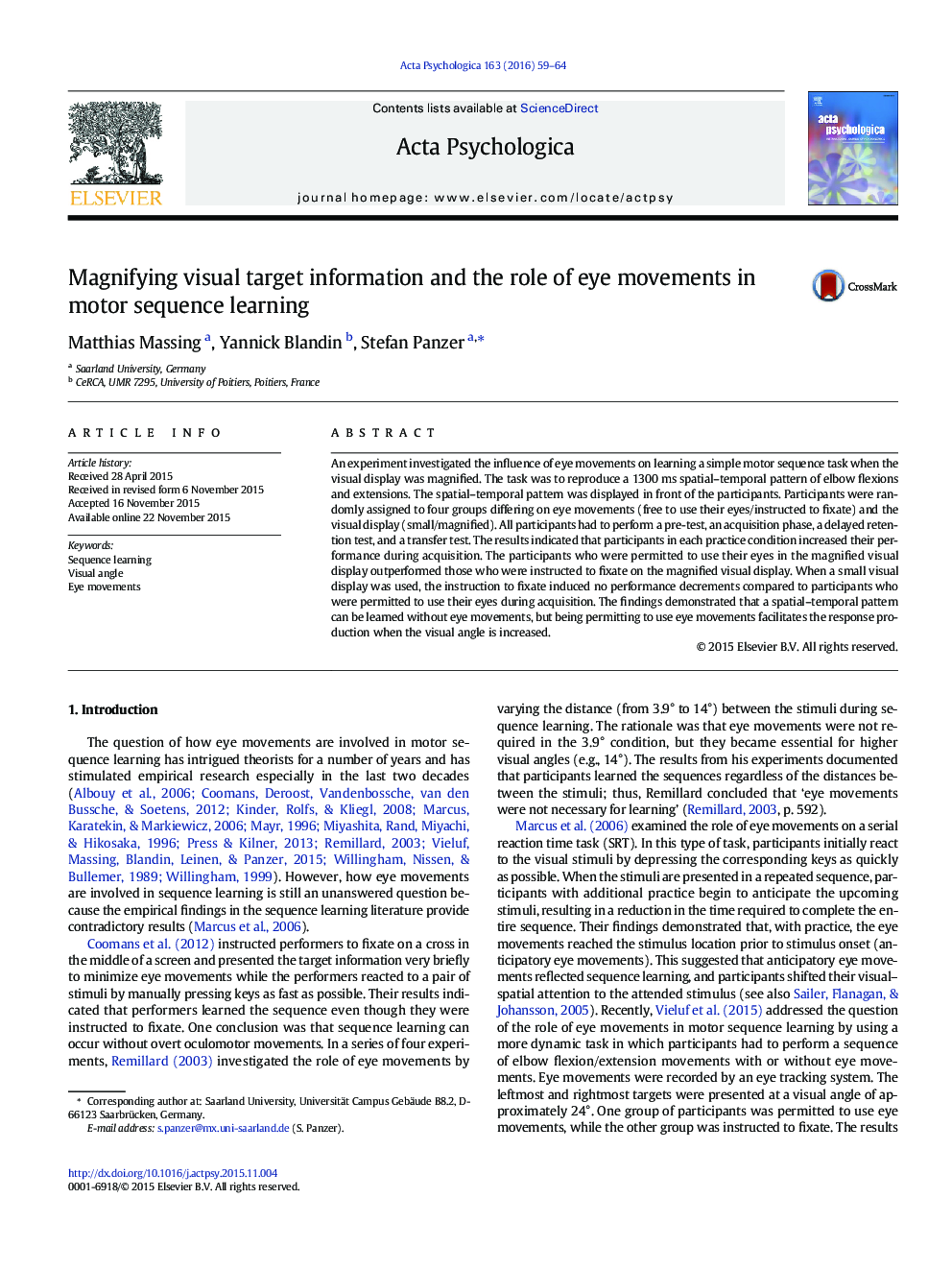| Article ID | Journal | Published Year | Pages | File Type |
|---|---|---|---|---|
| 7277122 | Acta Psychologica | 2016 | 6 Pages |
Abstract
An experiment investigated the influence of eye movements on learning a simple motor sequence task when the visual display was magnified. The task was to reproduce a 1300Â ms spatial-temporal pattern of elbow flexions and extensions. The spatial-temporal pattern was displayed in front of the participants. Participants were randomly assigned to four groups differing on eye movements (free to use their eyes/instructed to fixate) and the visual display (small/magnified). All participants had to perform a pre-test, an acquisition phase, a delayed retention test, and a transfer test. The results indicated that participants in each practice condition increased their performance during acquisition. The participants who were permitted to use their eyes in the magnified visual display outperformed those who were instructed to fixate on the magnified visual display. When a small visual display was used, the instruction to fixate induced no performance decrements compared to participants who were permitted to use their eyes during acquisition. The findings demonstrated that a spatial-temporal pattern can be learned without eye movements, but being permitting to use eye movements facilitates the response production when the visual angle is increased.
Related Topics
Life Sciences
Neuroscience
Cognitive Neuroscience
Authors
Matthias Massing, Yannick Blandin, Stefan Panzer,
